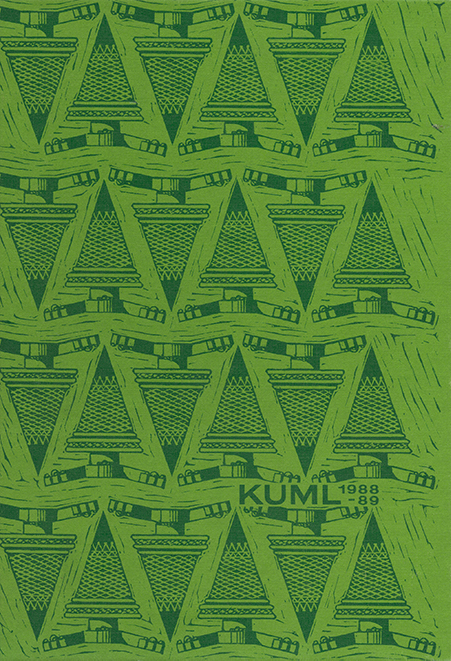Gantrup. A mound from the single-grave culture with a circular trench and a grave with a mortuary house
DOI:
https://doi.org/10.7146/kuml.v36i36.110863Keywords:
Gantrup, mound, single-grave culture, circular trench, grave, mortuary house, outer palisadeAbstract
Gantrup
A mound from the Single-Grave culture with a circular trench and a grave with a mortuary house
The article deals with the results of an excavation of a ploughed-down mound which was discovered by aerial photograph in 1977 (fig. 1) (1, 2, 3). The mound consisted of four parts. There was one central grave with a mortuary house attached, covered by a lightcoloured mound built up of peat, and surrounded by an entirely circular trench with an outer palisade of vertical-standing posts.
The central grave was an interment grave, east-west in axis, about 2.5 m long and 1.1 m wide (figs. 2, 3 and 6). At a depth of 10 cm traces were found of a partially burnt/singed plank-coffin and of grave-goods in the south-west corner (4-5). The latter included a battleaxe (Glob type F2) (6), a hollow-ground thick-butted chisel, one small amber bead, 7 more -or-less even-sized flint chips and a small thin-bladed flint axe (figs. 4, 5). There was no trace of the dead body, but the grave-goods revealed that this was a man's grave (7). By means of the battle-axe the grave can be dated to the early Bottomgrave period (8).
Around the grave there had stood a rectangular tent-shaped mortuary-house, about 2 X 3 m, built out of pointed singed rafters (figs. 6, 7) (5). The mortuary-house was probably covered with a light side-cladding in the form of mats, thatch or something similar. Of the mound which had existed above it only a 4-20 cm-thick layer remained (fig. 8). In several places the mound had completely disappeared and the old vegetation layer which had been underneath it lay directly under the plough-layer (9). In a couple of the main profiles a slight subsidence immediately within the circular trench was observed. The significance of this could not be determined.
The mound was encircled, for the whole of its circumference, by a completely circular trench with an outer diameter of 19 m (figs 9, 10). the circular trench was 1.4 m wide and outside it, all round the circle, there was a continuous palisade constructed of vertical, probably split, trunks, which had been placed with the convex bark side outwards (figs. 11, 12, 13).
The circular trench is the largest known so far of its kind in Denmark -and maybe even in northern Europe- from the Single Grave Culture (11-14). The structure's size is no doubt primarily due to the status of the buried man; the perfect battle-axe, the chisel and the thin-bladed axe, which are all individually rare objects in the range of Danish gravefinds, show that the dead person was buried with grave-goods of above-average quality (18-19).
Orla Madsen
Horsens historiske Museum
Downloads
Published
How to Cite
Issue
Section
License
Fra og med årgang 2022 er artikler udgivet i Kuml med en licens fra Creative Commons (CC BY-NC-SA 4.0).
Alle tidligere årgange af tidsskriftet er ikke udgivet med en licens fra Creative Commons.


